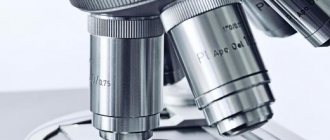Neurotic disorders occupy a leading place in the structure of mental illnesses. The prevalence of psychogenic neurotic disorders necessitates constant improvement of their diagnosis, therapy and prevention. Often, patients with neurotic disorders seek specialized help from neurologists and general practitioners.
At the Yusupov Hospital, this category of patients is treated by experienced psychotherapists who have specialized in leading European clinics and are fluent in psychotherapeutic techniques, including cognitive behavioral therapy. Medical staff treats patients' problems with respect.
ICD 10 code
Stress-related and somatoform neurotic disorders in ICD 10 are classified in categories F40-F48. Neurosis is a disease with reversible mental disorders. The disease is caused by exposure to traumatic factors. Neurotic disorder is characterized by the presence of the following symptoms:
- disturbances of well-being, somato-vegetative, emotional functions;
- mental exhaustion;
- the patient’s awareness of the fact of his illness;
- absence of disruption of the reflection of the real world.
Psychiatrists distinguish the following clinical forms of neurotic conditions: asthenic neurosis (astheno-neurotic disorder or neurasthenia), obsessive-compulsive neurosis, hysterical neurosis, neurotic depression (depressive neurosis).
Causes
The formation of neurotic disorders is provoked by the influence of many factors. This may be a short-term reactor or chronic stress. Currently, there are two main causes of neuroses:
- insufficient functionality of the body's neurotransmitter and neurophysiological systems, which leads to a pronounced response to stress;
- mental characteristics, personality type and relationships with other people.
- The most common causes for the development of neurological disorders are:
- long-term illnesses, especially those accompanied by intoxication;
- addiction to drinking alcohol or smoking tobacco;
- chronic or acute stress: death or serious illness of a loved one, divorce, dismissal;
- mental overload;
- influence of family and others. Children adopt the habits and behavior of their parents; if the mother or father behaves aggressively, there is a high probability of neurotic disorders in the child.
Causes of astheno-neurotic syndrome
The condition is provoked by many etiological factors. Infectious or somatic pathologies cause asthenia, which for children with unstable mental health is fraught with exhaustion. The prerequisites for asthenoneurosis include too much workload of the child both at school and outside its walls. The risk of developing the syndrome increases with poor social adaptation and an unhealthy family environment. The main provocateurs of the disease are:
- disorders of intrauterine brain development due to hypoxia, bad habits of a pregnant woman;
- head injuries;
- infectious diseases, chronic kidney or liver pathologies;
- vitamin B deficiency;
- overvoltage;
- hormonal disorders;
- stress due to fear, tragic events;
- features of upbringing and temperament.
Classification
The main types of neurosis include:
- Neurasthenia. Develops against the background of difficulties in interpersonal relationships. It is also called “irritable weakness”, such people show dissatisfaction with any reason, they are bothered by headaches and heart pain, tachycardia, heartburn and sleep disturbances;
- Hysteria or conversion neurosis. It is observed more often in females. Such people play along with the created image. Often this is the role of a seriously ill patient, simulating seizures or loss of vision. An attack of hysteria occurs spontaneously, usually after a provoking situation, in order to get what is what. However, the symptoms do not appear at the request of the patient and leave him tormented. Hysteria is observed in spoiled people and people with high self-esteem who are not accustomed to being denied anything;
- Obsessive-compulsive neurosis. The condition manifests itself through the emergence of fear and anxious thoughts even in the absence of a provoking agent. These include fear of society, fear of infection with some kind of disease. To alleviate their condition, patients may resort to special rituals that cause inconvenience and suffering. This group includes phobic neurosis and panic attacks;
- Somatoform disorders. This is the name given to the appearance of complaints that resemble a somatic disease, but no organ pathology is objectively detected.
- This group of neuroses is classified as general, in the clinic of which emotional disorders predominate.
- According to the duration of their course, neuroses are divided into:
- Spicy. They develop in response to short-term stimuli and can go away on their own, without specific therapy. This type of neurosis is also called situational;
- Chronic. They arise under the influence of a long-term stimulus, leading to disadaptation in society and changes in the psycho-emotional background.
- Other types of neurotic disorders:
- Bulimia is an eating disorder. It often occurs in teenage girls with complexes and lack of self-confidence. There are two forms of bulimic neurosis: with and without purging. In the first case, a person periodically overeats, then artificially induces vomiting so as not to gain weight. People suffering from bulimia without purging exhaust their bodies with strict diets and excessive exercise;
- Hypochondriacal neurosis is classified as a somatoform disorder. Such people concentrate their attention even on minor deteriorations in their well-being. They regard any symptoms as a sign of a dangerous disease. Such people usually come to the doctor with a stack of reports from other specialists and the results of many examinations. The diagnosis is made by excluding somatic pathology based on examination data, treatment is carried out by a psychotherapist;
- Autonomic neurotic disorder or VSD is a complex of symptoms caused by dysfunction of the sympathetic and parasympathetic nervous system. Depending on the predominance of the tone of the nervous system, VSD can occur as sympathicotonia or vagotonia. In the first case, symptoms of activation of the sympathetic nervous system (increased blood pressure, tachycardia, pallor) dominate, in the second - parasympathetic (low blood pressure, slow pulse, dizziness, redness of the skin). A separate category is vegetative crisis, which is characterized by increased symptoms and is accompanied by dizziness, weakness, sweating and decreased blood pressure. Against the background of an imbalance in the functioning of the nervous system, muscular or respiratory neurosis may occur;
- Noogenic neurosis has recently become increasingly widespread due to a sedentary lifestyle and the emergence of a virtual network. At the same time, a person loses his life values and regards his existence as meaningless, he has no incentive to work, he is not satisfied with his life and is unable to overcome life’s difficulties;
- Neurogenic bladder syndrome is a neurosis characterized by a fear of voiding in a public place. Such a person takes a long time to adjust to urination, eventually avoids leaving the house, and tries to drink less liquid in a public place;
- Cardioneurosis or cardiac neurosis is a disorder of cardiac activity in response to a mental disorder. A person feels a “fading” heart, pain in the chest, attacks of palpitations or pulsations throughout the body. During an attack, a person is bothered by a feeling of fear and anxiety. After ruling out cardiac pathology, such patients are prescribed a consultation with a psychotherapist;
- Sexual neurosis is a mental disorder that affects a person’s sex life. Sexual disorders are manifested by either an increase or decrease in sexual desire. With increased desire, sexual desire is directed towards another object, and sexual perversion occurs. A decrease in desire leads to the fact that a person avoids sexual contacts, and sometimes even people of the opposite sex;
- Obsessive-compulsive disorder is characterized by the presence of intrusive thoughts (obsessions) and actions (compulsions).
- There is alcoholic neurosis, which occurs against the background of severe alcohol dependence and can become chronic. Symptoms of this condition vary and may include insomnia, fatigue, aggression or depression, headaches and heart pain. The main goal of treatment is to get rid of addiction.
PsyAndNeuro.ru
In addition to the new mental and behavioral disorders in ICD-11 described in the previous part, we are publishing changes made to each of the major disorder groups in the ICD-11 chapter on mental, behavioral and neurodevelopmental disorders. These changes were made based on a review of the available scientific evidence by working groups and expert consultants.
The February issue of World Psychiatry Journal, which described the main changes in ICD-11, was translated by the Council of Young Scientists of the Russian Society of Psychiatrists. This part describes changes in the following groups: neurodevelopmental disorders; schizophrenia and other primary psychotic disorders; mood disorders; disorders caused by anxiety and fear, obsessive-compulsive and related disorders, as well as disorders directly related to stress.
List of diagnostic categories of the chapter on mental, behavioral and neurodevelopmental disorders in ICD-11:
- Neurodevelopmental disorders
- Schizophrenia and other primary psychotic disorders
- Catatonia
- Mood disorders
- Disorders caused by anxiety and fear
- Obsessive-compulsive and related disorders
- Disorders directly related to stress
- Dissociative disorders
- Eating and feeding disorders
- Disorders associated with the excretory system
- Disorders related to bodily self-awareness and bodily discomfort
- Substance use and addictive behavior disorders
- Impulse control disorders
- Defiant and dissocial behavior disorders
- Personality disorders
- Desire disorders
- Factitious disorders
- Neurocognitive disorders
- Mental and behavioral disorders associated with pregnancy, childbirth and the postpartum period
- Psychological and behavioral factors influencing disorders or diseases classified elsewhere
- Secondary mental or behavioral syndromes associated with disorders or diseases from other headings
Neurodevelopmental disorders
Neurodevelopmental disorders are those that are associated with significant difficulties in the acquisition and use of certain intellectual, motor, language and social functions and begin during the developmental period. The ICD-11 group of neurodevelopmental disorders includes such ICD-10 groups as mental retardation, psychological development disorders, and attention deficit hyperactivity disorder (ADHD).
Major changes to ICD-11 include the renaming of mental retardation in ICD-10, which was an outdated and stigmatizing term that did not adequately cover the range of forms and etiologies associated with the condition, as intellectual developmental disorders. Intellectual developmental disorders continue to be defined based on significant limitations in intellectual functioning and behavioral adaptability, ideally defined using standardized, appropriately normed, and individually tailored metrics. Given that different regions of the world have traditionally used different standards of measurement or trained personnel, and because of the importance of determining the severity of the condition for treatment planning, the ICD-11 CDDG provides a comprehensive set of tables with behavioral indicators.
Tables of intellectual functioning and adaptive behavior are separated. Functional areas are divided into three components: conceptual, social, practical; There are three age groups (early childhood, childhood/adolescence and adulthood) and four levels of severity (mild, moderate, severe, profound). Behavioral indicators describe those skills and abilities that are typically observed within each of these categories. Thus, it is expected that the level of confidence in severity profiles will increase and the quality of public health data regarding the burden of intellectual development disorders will improve.
Autism spectrum disorder in ICD-11 includes both childhood autism and Asperger's syndrome in ICD-10 under one category characterized by deficits in social communication and restricted, repetitive and inflexible patterns of behavior, interests or activities. Guidelines for autism spectrum disorder have been substantially updated to reflect current literature, including the life course manifestations of the disorder. The assessment criteria are designed to represent degrees of impairment in intellectual functioning and language skills and cover all aspects of autism spectrum disorder across a broad range of dimensions.
ADHD replaced hyperkinetic disorder in ICD-10 and was moved to the group of neurodevelopmental disorders due to its early onset, characteristic impairments in intellectual, motor and social functioning, and frequent co-occurrence with other neurodevelopmental disorders. This move was also intended to differentiate previously related ADHD from disruptive behavior and dissocial disorders, for the reason that in ADHD, disruptive behavior tends to be unintentional. ADHD in ICD-11 would be characterized as predominantly inattentive, predominantly hyperactive-impulsive, or mixed type and described across the lifespan.
Finally, chronic tic disorders, including Tourette's syndrome, are classified under ICD-11 as Disorders of the Nervous System and overlap with neurodevelopmental disorders due to their high comorbidity (eg, with ADHD) and typical early onset of development.
Schizophrenia and other primary psychotic disorders
In ICD-11, the group of schizophrenia and other primary psychotic disorders replaced the group of schizophrenia, schizotypal and delusional disorders from ICD-10. The term "primary" indicates that psychotic processes are the primary feature, as opposed to psychotic symptoms that may arise as an aspect of other forms of psychopathology (eg, mood disorders).
In ICD-11, the symptoms of schizophrenia remained virtually unchanged compared to ICD-10, although the importance of Schneider's first rank symptoms was reduced. The most significant change is the elimination of all subtypes of schizophrenia (paranoid, hebephrenic, catatonic, etc.) due to their lack of predictive validity or benefit in treatment selection. Instead of subtypes, dimensions were introduced. These include: positive symptoms (delusions, hallucinations, disorganized thinking and behavior, phenomena of mental automatism); negative symptoms (dull or flattened affect, alalia or impoverished speech, abulia, anhedonia); symptoms of depressive mood; symptoms of manic mood; psychomotor symptoms (psychomotor agitation, psychomotor retardation, catatonic symptoms); cognitive symptoms (particularly deficits in processing speed, attention/concentration, orientation, judgment, abstraction, verbal or visual learning, and working memory). These same symptom scales can be applied to other disorders in the group (schizoaffective disorder, acute and transient psychotic disorder, delusional disorder).
The ICD-11 diagnosis of schizoaffective disorder still requires that criteria for schizophrenia and a mood disorder episode be present simultaneously. This diagnosis is intended to qualify the current episode of a disease state and is not considered to be stable over time.
In ICD-11, acute and transient psychotic disorder is characterized by the sudden onset of positive psychotic symptoms that rapidly change in appearance and intensity over a short period of time and persist for no more than three months. This corresponds only to the ICD-10 "polymorphic" form of acute psychotic disorder, which is the most common form, and does not indicate schizophrenia. Non-polymorphic subtypes of acute psychotic disorder (ICD-10) have been excluded and will instead be classified in ICD-11 as “other primary psychotic disorders.” As in ICD-10, schizotypal disorder is classified in this group and is not considered a personality disorder.
Mood disorders
Unlike ICD-10, in ICD-11 episodes are not regarded as independent conditions, but as a basis for making a diagnosis that best matches the clinical picture. Mood disorders are divided into depressive disorders (which include single depressive disorders, recurrent depressive disorder, dysthymic disorder, and mixed depressive-anxiety disorder) and bipolar disorders (which include bipolar I disorder, bipolar II disorder, and cyclothymia). ICD-11 divides bipolar disorder into type I and type II disorders. A separate ICD-10 mood disorder subgroup group consisting of persistent mood disorders (dysthymia and cyclothymia) was removed.
The diagnostic guidelines for a depressive episode are one of the few places in ICD-11 where a minimum number of symptoms is required. This is due to many years of research and clinical tradition of conceptualizing depression in this way. A minimum of five of ten symptoms is required, rather than four of the nine possible symptoms listed in ICD-10, increasing consistency with DSM-5. To help clinicians conceptualize and recall the full spectrum of depressive symptomatology, the ICD-11 CDDG organizes depressive symptoms into three clusters—affective, cognitive, and neurovegetative. Fatigue is part of the neurovegetative cluster of symptoms, but is no longer considered an independent initial-level symptom; more precisely, for diagnosis, a daily low mood or decreased interest in activities must be observed for at least the last two weeks. Hopelessness was added as an additional cognitive symptom due to strong evidence of its predictive value in the diagnosis of depressive disorders. The ICD-11 CDDG provides clear guidance on differentiating culturally normative grief reactions and symptoms that require consideration when diagnosing a depressive episode in the context of bereavement.
To diagnose manic episodes, ICD-11 requires the presence of level 1 symptoms (increased activity, subjective feeling of energy) in addition to euphoria, irritability, or incontinence. This was done to prevent false positive diagnosis cases that correspond to normative mood swings. ICD-11 defines hypomanic episodes as a weakened form of a manic episode without significant loss of functionality. The description of mixed episodes in ICD-11 coincides with ICD-10, because there is evidence of the validity of this approach. The guide contains indications of typical bipolar symptoms when manic or depressive symptoms predominate. The presence of a mixed episode indicates a diagnosis of bipolar disorder, type I.
ICD-11 provides various tools to qualify a current episode of mood disorder or remission (partial or complete). Depressive, manic, and mixed episodes may occur with or without psychotic symptoms. Current depressive episodes in the context of depressive or bipolar disorders can be further characterized by severity (mild, moderate, or severe); melancholic symptoms correspond to somatic manifestations from ICD-10, and a persistent episode (protracted episode) must last more than two years. All mood episodes in the context of depressive or bipolar disorders may be complemented by the use of anxiety symptoms, the presence of panic attacks, and the presence of seasonality. It is also possible to qualify bipolar disorder with rapid cycling.
ICD-11 includes a category of mixed depressive and anxiety disorders due to their importance in primary care settings. Given evidence of shared symptomatology with mood disorders, this ICD-11 diagnosis was moved from the ICD-10 anxiety disorders category to depressive disorders.
Disorders caused by anxiety and fear
ICD-11 groups disorders with anxiety or fear as the main clinical feature in this new group. Consistent with the ICD-11 life course approach, this group includes separation anxiety disorder and selective mutism, both of which were classified as childhood disorders in ICD-10. In ICD-11, the distinction between phobic anxiety disorders and other anxiety disorders that existed in ICD-10 was eliminated in favor of a more clinically useful method of characterizing each anxiety and fear-related disorder according to its perceptual focus, that is, the description of the stimulus that evokes anxiety, excessive physiological reaction or maladaptive behavior.
Generalized anxiety disorder (GAD) is characterized by a general apprehension or worry that is not limited to any specific stimulus. In ICD-11, GAD has a more elaborate set of diagnostic criteria, reflecting advances in understanding its unique phenomenology. In particular, anxiety is added to the general perception as a basic symptom of the disorder. Unlike ICD-10, the ICD-11 CDDG indicates that GAD may co-occur with depressive disorders as long as symptoms are present regardless of mood episodes. Similarly, other hierarchical exclusion rules that were in ICD-10 (GAD cannot be diagnosed with anxiety-phobic disorder or obsessive-compulsive disorder) are also excluded due to better delineation of the phenomenology of the disorder in ICD-11 and evidence that these rules could interfere with the detection and treatment of conditions that require separate, specific clinical attention.
Agoraphobia is defined in ICD-11 as severe and excessive fear or anxiety that occurs in anticipation of, or in the immediate experience of, a situation where help is difficult or unavailable. The difference from ICD-10 is that it was previously described more narrowly as a fear of open spaces and associated situations, such as crowds of people, and may have difficulty leaving the area quickly; now the basis is fear for negative consequences that could lead to negative consequences or be cast in an unsightly light.
Panic disorder is defined in ICD-11 as recurrent, unexpected panic attacks that are not limited to specific stimuli or situations. The ICD-11 CDDG indicates that panic attacks that occur only in response to a specific stimulus or in anticipation of a feared stimulus (eg, public speaking in social anxiety disorder) do not require an additional diagnosis of panic disorder.
Rather, in such cases, the classification “with panic attacks” may be added to the diagnosis of anxiety disorder. The categorization “with panic attacks” may also be applied to other disorders where anxiety may be a prominent but not a defining symptom, such as in some patients with a depressive episode.
Social anxiety disorder in ICD-11 is based on the fear of negative evaluation from others and replaces the ICD-10 diagnosis of “social phobia.” The ICD-11 CDDG specifically describes separation anxiety disorder in adults, which most often occurs in association with a romantic partner or child.
Obsessive-compulsive and related disorders (OCRD)
The introduction of OCRD into ICD-11 represents a significant change from ICD-10. The rationale for creating the OCRD group, as distinct from the anxiety-phobic disorder group, despite phenomenological overlap, was the clinical benefit of grouping the symptoms of recurrent unwanted thoughts and associated repetitive behaviors as a core clinical feature. The diagnostic consistency of this grouping is based on emerging evidence of common validators among the included disorders from neuroimaging, genetic, and neurochemical studies.
ICD-11 OCRD includes obsessive-compulsive disorder, dysmorphia, olfactory disorder, hypochondria (obsessive fear of illness) and pathological hoarding. Equivalent disorders in ICD-10 were located in different groups. OCRD also includes a subgroup of body-focused repetitive behavior disorders that include trichotillomania (hair pulling disorder) and excoriation disorder (skin picking/picking disorder), both of which share the common feature of repetitive behavior patterns without the cognitive aspect of other OCRDs. Tourette's syndrome, in ICD-11, is a disease of the nervous system, but is also included in the OCRD group due to its frequent combination with obsessive-compulsive disorder.
ICD-11 retains the core features of obsessive-compulsive disorder from ICD-10 (persistent obsessions and/or actions), but with some important changes. ICD-11 expands the concept of obsessions beyond obsessive thoughts to include unwanted images and urges/impulses. Moreover, the concept of coercion expands to include, but is not limited to, covert (e.g., counting) as well as overt, repetitive behavior.
Although anxiety is the most common affective experience associated with obsessions, ICD-11 explicitly mentions other phenomena reported by patients, such as disgust, shame, a feeling of “incompleteness,” or anxiety when things don’t look or feel “right.” . OCD subtypes that existed in ICD-10 were removed because most patients reported both obsessions and compulsions and because they had no impact on treatment prognosis. The impossibility of simultaneous diagnosis of OCD and depressive disorder, which existed in ICD-10, was abolished in ICD-11, because this reflects the high incidence of co-occurrence of both disorders, which require different treatments.
Hypochondriasis (obsessive fear of illness), due to its common phenomenology and patterns of common origin, is located in OCRD rather than among the group of anxiety and fear-related disorders, even though health concerns are often associated with anxiety and fear. However, hypochondriasis (obsessive fear of illness) is also listed under the group of anxiety and fear-related disorders, suggesting some phenomenological overlap. Dysmorphic disorder, olfactory disorder and hoarding are new categories that have been included in the ICD-11 group OCRD.
The cognitive component in OCRDs (beliefs) may be expressed with such intensity or persistence that they appear delusional. When these fixed beliefs are fully consistent with the phenomenology of OCRD and there are no other psychotic symptoms, the classification “with weak or absent insight” should be used and a diagnosis of delusional disorder should not be made. This approach is designed to help prevent people with OCRD from being treated for psychosis when they do not need it.
Disorders directly related to stress
The group of disorders specifically related to stress in ICD-11 replaces the ICD-10 group "Reactions to severe stress and adjustment disorders" to emphasize that stress is a necessary but not sufficient component in the etiology of these disorders, and also to distinguish between those included in this group. a group of disorders from various other mental disorders that occur in response to stressors (eg, depressive disorders). In accordance with the ICD-11 approach to considering disorders over the life span, ICD-10 diagnoses such as reactive attachment disorder and disinhibited attachment disorder of childhood are included in this group because these disorder disorders are directly related to attachment stress. ICD-11 includes several important conceptual updates to ICD-10—the introduction of complex PTSD and protracted grief disorder, which have no counterparts in ICD-10.
PTSD is defined by three features that must be present in all cases and must cause significant impairment. These include: re-experiencing the traumatic event in the present (flashbacks), deliberate avoidance of reminders that may trigger the re-experiencing, and a persistent sense of heightened threat in the present. Including a requirement to re-experience cognitive, affective, or physiological aspects of the trauma, rather than simply remembering the event, is expected to address the low diagnostic threshold for PTSD that existed in ICD-10.
Adjustment disorder in ICD-11 is diagnosed if there is an underlying “preoccupation” with a negative life event or its consequences, while in ICD-10 the disorder was diagnosed if symptoms arising in response to a life stressor did not meet certain requirements of another disorders.
Finally, in ICD-11, acute stress reaction is no longer considered a mental disorder, but is understood as a normal reaction to an extreme stressor. And now it is classified in the chapter “Factors influencing or related to health” and is not duplicated in the group of disorders directly related to stress. This is done to facilitate differential diagnosis.
Translation into Russian was organized by the Council of Young Scientists of the Russian Society of Psychiatrists with the support of the World Psychiatric Association.
Support us by subscribing to Patreon
Translation: Pikirenya V.I. (Minsk)
Editor: Ph.D. Reznikov M.K. (Voronezh)
Source: Reed GM, First MB, Kogan CS, et al. Innovations and changes in the ICD-11 classification of mental, behavioral and neurodevelopmental disorders. World Psychiatry
. 2019;18(1):3–19. doi:10.1002/wps.20611
Symptoms
In patients with neurosis, two groups of symptoms are distinguished:
- Somatic. They arise as a result of uncoordinated work of the sympathetic and parasympathetic nervous systems. In this case, the person has complaints about his health, but there is no pathology of the internal organs;
- Psychological symptoms are different for different types of neurosis.
Somatic symptoms Neurosis can be suspected if the following symptoms are present:
- increase or decrease in blood pressure;
- tinnitus, hand tremors;
- insomnia;
- decreased concentration, memory impairment;
- tachycardia or bradycardia;
- muscle pain, twitching, even cramps;
- nausea, vomiting;
- increased or decreased appetite;
- unsteadiness of gait;
- pain in the left side of the chest;
- difficulty urinating;
- increased sweating;
- tingling sensation, numbness in the limbs, changes in sensitivity in various parts of the body;
- gastrointestinal disorders: constipation, diarrhea;
- trembling in the body;
- headache;
- feeling of pulsation in various parts of the body;
- darkening of the eyes;
- stomach ache;
- decreased potency;
- pale or red skin;
- feeling of lack of air when breathing;
- skin rashes, scratching, burning.
When the first symptoms appear, patients go to the hospital and only after a long examination and consultations with various specialists do they see a psychiatrist.
Prolonged absence of diagnosis leads to increased severity of symptoms and the transition of the disease to a chronic form. The Yusupov Hospital employs specialists of the highest category with scientific degrees and extensive experience in treating neurotic disorders.
Make an appointment
Psychological The presence of psychological symptoms indicates that with neurosis there is a disorder of the psycho-emotional sphere. Signs of a neurotic disorder include:
- Decreased self-esteem. A person in a state of neurosis is indecisive in his actions, avoids crowds of people;
- Irritability. Any difficulties and situations provoke a violent reaction, anger, aggression, hysteria;
- Touchiness. A neurotic takes any criticism literally;
- Depression. The state of neurosis leads to a constantly depressed mood, lack of desires and drives, up to complete apathy and self-deprecation;
- Self-criticism. Neurotics treat even the slightest shortcomings strictly;
- Anxiety. Such people are constantly afraid of something, especially with regard to obsessive-compulsive disorder. Sometimes panic attacks can occur - an attack of anxiety and fear, accompanied by somatic symptoms;
- Instability of the emotional background is a change in mood, either for the good or for the bad, for no apparent reason. A bad mood can manifest itself as tearfulness and powerlessness for no reason;
- Difficulty communicating with other people. The state of neurosis provokes the emergence of internal conflict and alienation from the outside world.
Symptoms of neurosis in men and women Signs of a neurotic disorder in men may include disturbances in sexual desire and sexual function.
The stronger sex is more likely to experience depression due to lack of fulfillment and lack of work. Hysterical neuroses are more typical for women. This condition is often accompanied by severe somatic complaints. Typically, this condition occurs in people with a demonstrative personality type, when trying to attract attention.
How to get rid of it yourself
Few people manage to get rid of anxiety disorder on their own. This is a disease, it needs to be treated, and not wait until it “goes away on its own” or try to fight it on your own. But there are many ways to temporarily reduce anxiety, stop a panic attack, reduce tension and feelings of fear. These include: auto-training, water treatments (cold shower in the morning, warm bath in the evening), giving up alcohol, physical exercise (“intensive exercise”), normalizing the daily routine and sleep-wake cycle, spiritual development, personal growth, etc.
See advice from psychologists on how to cope with anxiety and panic HERE.
Signs of other psychogenic neurotic disorders
Obsessive-compulsive neurosis actually includes obsessions (obsessions) and phobias (obsessive fears).
Obsessive disorders are represented by obsessive thoughts that are stereotypically repeated and extremely painful for the patient. Compulsions are repeated behaviors that purport to prevent harmful or dangerous events that are extremely unlikely to occur. The patient is formally critical of ritual actions, but cannot overcome them on his own. Phobic disorders include fear of certain situations. The patient is critical of his own phobic experiences, understands their alienness, strives to overcome them, but cannot free himself from them. The following obsessive fears are encountered:
- Agoraphobia is a persistent fear of being in crowds of people, fear of public places (workplaces, shops, streets, open squares, theaters, concert halls), and independent long trips on various types of transport;
- Claustrophobia – fear of closed spaces;
- Thanatophobia – fear of death;
- Cancerophobia – fear of cancer;
- Cardiophobia is the fear of severe heart disease.
Hysterical neurosis includes conditions that arise in patients with an obvious or objectively proven conflict situation (violation of interpersonal relationships, insoluble problems), even if the patient denies it.
More often, such conditions arise and stop suddenly. Some of them (anaesthesia and paralysis) gradually develop and persist for a long time. There is no connection between the mental disorder and neurological or physical disorders. The “benefits” for the patient and the clearly psychogenic nature of the disorders raise suspicions about attitudinal behavior. These specific psychopathological manifestations are disease states with specific pathogenetic mechanisms. Hysterical amnesia is manifested by impaired memory for recent stressful events, accompanied by depressive feelings. Memory loss is often partial. It is not caused by intoxication or organic brain damage.
Hysterical movement disorders reflect the patient’s subjective ideas about an alleged neurological disease, but the nature of the complaints does not correspond to real organic disorders. The presence of movement disorders allows the patient to avoid a difficult psychotraumatic situation. The intensity of the manifestation of disorders is closely related to the number of people who are present near the patient. Patients use the violations themselves to attract the attention of others.
Hysterical neurosis can be manifested by the following motor disorders:
- convulsive seizures;
- paralysis (complete and partial);
- hyperkinesis (excessive violent motor acts that occur against the patient’s will);
- contractures (stiffness of joints);
- mutism (a condition when the patient does not answer questions and does not even make it clear that he hears them);
- hysterical stupor (depressed mental state, manifested in silence, inhibition, inactivity).
The patient may experience convulsions similar to epileptic seizures.
All these disorders are not caused by organic damage to the organ or other disease. There are no signs such as tongue biting, involuntary urination, consequences of sudden falls, or loss of consciousness. Sensory disturbances during hysteria are manifested by a variety of sensitivity disorders:
- anesthesia (loss of sensitivity to pain);
- hyposthesia (decreased pain sensitivity);
- hyperesthesia (increased pain sensitivity);
- paresthesia (sensation of itching, burning, crawling).
Sensory disturbances often correspond to areas of innervation.
Patients experience bright, unusual hysterical pains. There is loss of hearing and vision. Depressive neurosis is a condition that is determined by the depressive triad: decreased mood, mental and motor retardation. Symptoms of the disease are moderately expressed, affect the patient’s behavior, but allow the individual to maintain social adaptation. Patients' ability to concentrate and self-esteem decreases. Night sleep disturbances and anxiety are typical.
Make an appointment
What are the most common signs of neuroses?
Among the mental symptoms, you should pay attention primarily to the following: • Emotional discomfort that occurs for no apparent reason. • Problematic communication with others. • Unpreparedness to make decisions. • Inadequacy of self-esteem with its overestimation or underestimation. • Frequent anxiety, a feeling of fear, anticipation of something unpleasant and scary, the development of phobias, the appearance of panic attacks. • Perversion of the system of values, aspirations, preferences, cynical attitude towards life and the environment. • Irritability and reduced resistance to stress. • Touchiness, tearfulness, increased vulnerability. • Obsession with traumatic circumstances. • Rapid fatigue due to intellectual stress, impaired memory, ability to concentrate. • Increased sensitivity to sudden changes in temperature, loud sounds, bright light. • Sleep disorders with difficulty falling asleep, night awakenings, superficial character, disturbing dreams, morning fatigue. A neurotic disorder may be indicated by physical symptoms of neurosis such as: • Pain of various localizations (headache, heart, gastrointestinal, muscle and joint) • Sudden changes in pressure. • Disorders of the vestibular apparatus with dizziness, imbalance, etc.: difficulty maintaining balance, dizziness. • Eating disorders, expressed in overeating or undereating, a sudden feeling of hunger with a quickly onset feeling of satiety. • Psychalgia (physical pain accompanying strong mental experiences, otherwise mental pain), increased concern for one’s own health, hypochondria. • Autonomic disorders - surges in blood pressure, tachycardia, cough, frequent urge to urinate, gastrointestinal dysfunction, sweating, chills, numbness and coldness of the extremities, etc. • Speech disorders in the form of stuttering. • Sexual dysfunction (decreased potency and libido) is rarely observed.
If neurosis is not treated in time, the symptoms intensify, and individual symptoms may become generalized. For example, pressure surges during stressful situations can turn into vegetative-vascular dystonia (otherwise neurocirculatory dystonia), associated with dysfunction of its sympathetic and parasympathetic departments and a violation of the neurohumoral regulation of the cardiovascular, respiratory system, intestinal motility, etc.
Diagnostics
Only a highly qualified specialist can diagnose neurosis, since the symptoms are very nonspecific. This may require consultation with doctors of various specialties:
- therapist;
- endocrinologist;
- gastroenterologist;
- cardiologist;
- neurologist.
Before scheduling a consultation with a psychiatrist, the patient is prescribed an examination. Taking into account the complaints, the doctor selects the necessary studies:
- MRI, CT;
- Ultrasound of the thyroid gland, genital organs;
- ECG;
- Echocardiography;
- Fibrogastroduodenoscopy.
Early diagnosis makes it possible to treat neurotic disorders in the early stages.
The Yusupov Hospital has its own diagnostic center with modern equipment of European quality. Doctors at our clinic regularly attend conferences, receive scientific titles and master new treatment methods. When diagnosing neurosis, differential diagnosis is carried out with other diseases:
- enteritis, gastritis;
- psychopathy;
- angina pectoris;
- hypothyroidism;
- adrenal tumor.
The main difference between neurotic disorders and somatic pathology is that as a result of examinations of internal organs, no deviations from the norm are observed. To confirm neurosis, special psychological tests are carried out: anxiety, the Zung and Beck depression test, the K. Leonhard questionnaire.
Treatment
Treatment of neurosis has two main directions:
- medicinal;
- psychotherapeutic.
Usually, for complete recovery, only psychotherapy is sufficient, but if this method is ineffective, drug treatment is required. Psychotherapy For neurosis, psychotherapy makes it possible to find the cause of the disorder and choose the most effective method of therapy. The following areas of psychotherapy are used to treat neurosis:
- Cognitive behavioral therapy allows you to learn to identify and manage negative thoughts, discover and change beliefs that cause maladjustment in the environment;
- Art therapy is aimed at the patient mastering various types of art: dancing, drawing, modeling, music. In the process of training, a person masters new possibilities, and this also allows him to throw out his emotions and negativity. This allows you to relax and take your mind off problems and get rid of complexes. With the help of art, a person gets to know himself, discovers new abilities, which is very important in the treatment of neurotic disorders. Art therapy is also used to diagnose mental disorders. In the process of sculpting or drawing, a person involuntarily projects his thoughts and emotions, which helps to identify hidden aggression and a depressive state;
- Psychoanalysis is a treatment method in which, based on associations, fantasies and dreams, the doctor can determine the presence of an internal conflict. With its help, the instinctive behavior of a person, drives and desires at the level of consciousness and the unconscious are studied;
- With the help of Gestalt therapy, a person acquires the ability to make decisions independently and control their behavior.
- Psychotherapy improves the patient’s general condition and normalizes the emotional background. Getting rid of anxiety, depression, fears and phobias in most cases is only possible with the help of treatment from a psychiatrist. Explanation of behavior and identification of the provoking agent is the basis of therapy for psychoneurosis. In addition to a psychiatrist, sessions with a psychologist can help. At your appointment, you will be able to learn relaxation techniques that will help you overcome stress.
Make an appointment
Drug treatment Despite the high effectiveness of psychotherapy, it does not always allow you to completely get rid of neurosis. Drug treatment of neurotic disorders involves normalizing the function of the nervous system and enhancing the effect of treatment by a psychotherapist. In pharmacotherapy, the following groups of drugs are used:
- Sedatives are used as a remedy for mild neurosis. They have a calming effect and reduce emotional stress. They practically do not cause side effects and addiction;
- Tranquilizers have an anti-anxiety effect and a strong sedative effect. They reduce fear, anxiety, eliminate obsessive thoughts and actions;
- Antidepressants normalize the levels of serotonin, dopamine and norepinephrine. They improve mood, have virtually no side effects and are highly effective, especially in people with hypothymia;
- General strengthening treatment is achieved by taking vitamins B, A, D, E and antioxidants.
Other commonly used treatments include:
- Massage for neurosis can be acupressure or individual segments. It increases blood circulation, improves skin nutrition, relieves muscle spasms;
- Physiotherapeutic procedures such as inductothermy, electrophoresis, galvanization and electrosleep help improve overall well-being and normalize mood.
Treatment of astheno-neurotic syndrome
The need to visit a neurologist arises in situations where the child is too irritable and capricious, his school grades have deteriorated, or nervous breakdowns occur in which he raises his voice at adults. All such signs can indicate not character problems, but nervous disorders. Attempts to independently pacify a teenager by shouting (or punishing) only aggravate the problem.
The first step is to visit a pediatric neurologist. An experienced specialist will quickly find out what is really happening: is it asthenoneurosis or is the child simply manipulating his parents due to hormonal changes in his body. Most often, a child’s nervous system can be easily corrected with corrective and developmental exercises, after which everything is restored, returning to normal. Good treatment results are provided by:
- consultations with a psychologist, changing the style of everyday life;
- sand therapy;
- sensory integration.
When astheno-neurotic syndrome is provoked by organic damage to the central nervous system and brain, correction must be supplemented with rehabilitation measures.
In such a situation, doctors prescribe the following procedures:
- TANK;
- Audiotherapy according to the A. Tomatis method;
- TCM;
- Biofeedback trainings.
Symptoms of asthenoneurosis do not seriously threaten children's health, but prolonged asthenia significantly worsens the quality of life and delays intellectual and physical development. Treating the problem is a complex task; it requires the involvement of a professional team, a combination of various healing methods.
Prognosis and prevention
Many people wonder how to live with neurosis.
The prognosis depends on the stage of development, type of disorder, timely detection and initiation of treatment. A significant improvement in the condition is observed with an integrated approach and a combination of medication and psychological assistance. Timely identification of the disorder guarantees the success of treatment, therefore, if you have symptoms of neurosis, you should immediately consult a doctor. Preventive measures to prevent neuroses and their relapses include:
- proper nutrition with sufficient fruits and vegetables will cover the body’s need for vitamins and minerals;
- a favorable atmosphere in the team and at home helps to improve vitality and strengthen the nervous system;
- getting rid of bad habits;
- healthy sleep and rest;
- regular walks in the fresh air;
- playing sports is one of the main ways to combat depression.
High modern standards are the basis for providing quality customer service at the Yusupov Hospital.
To schedule a consultation, call or leave a request on the website, and we will call you back. Make an appointment








